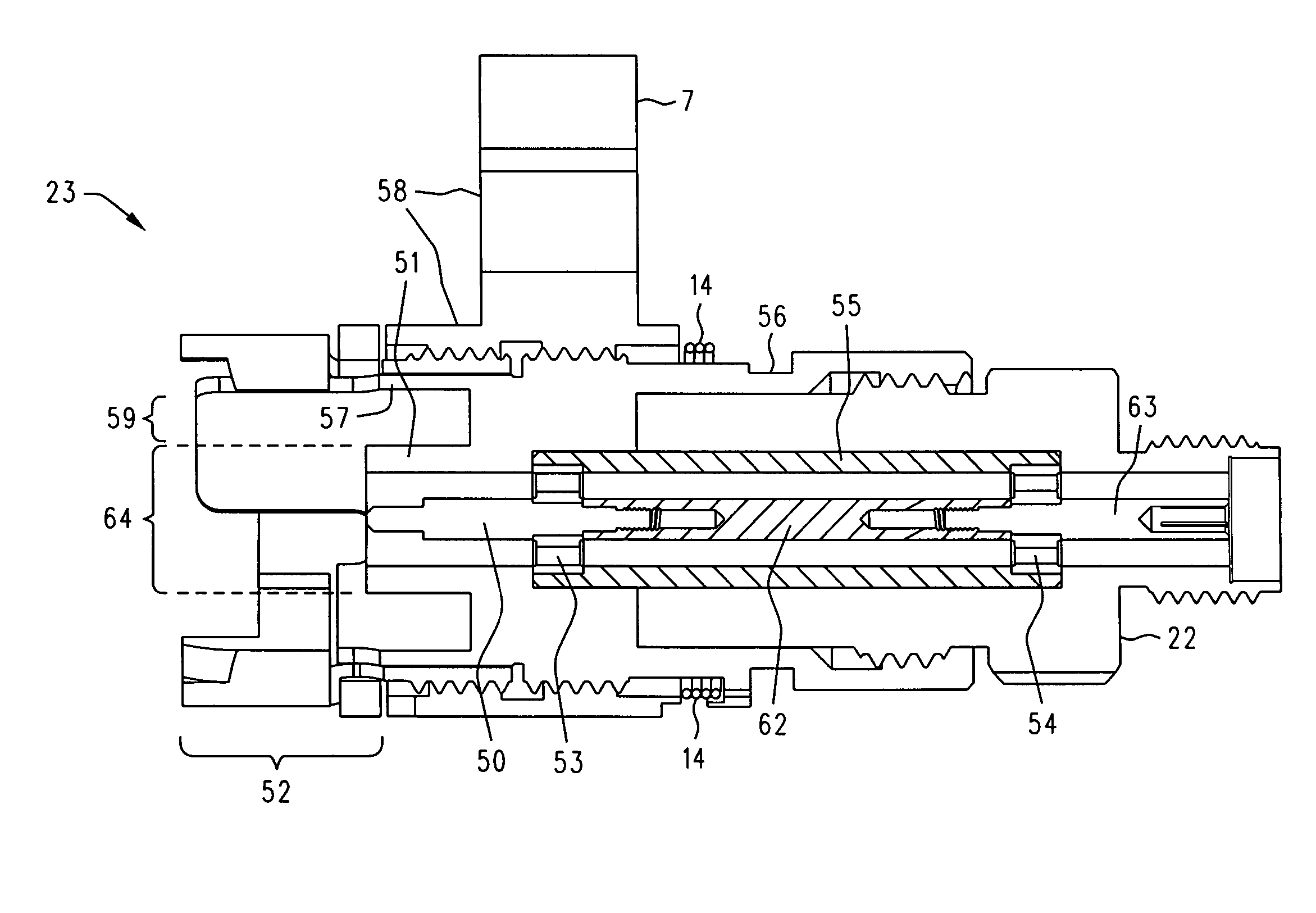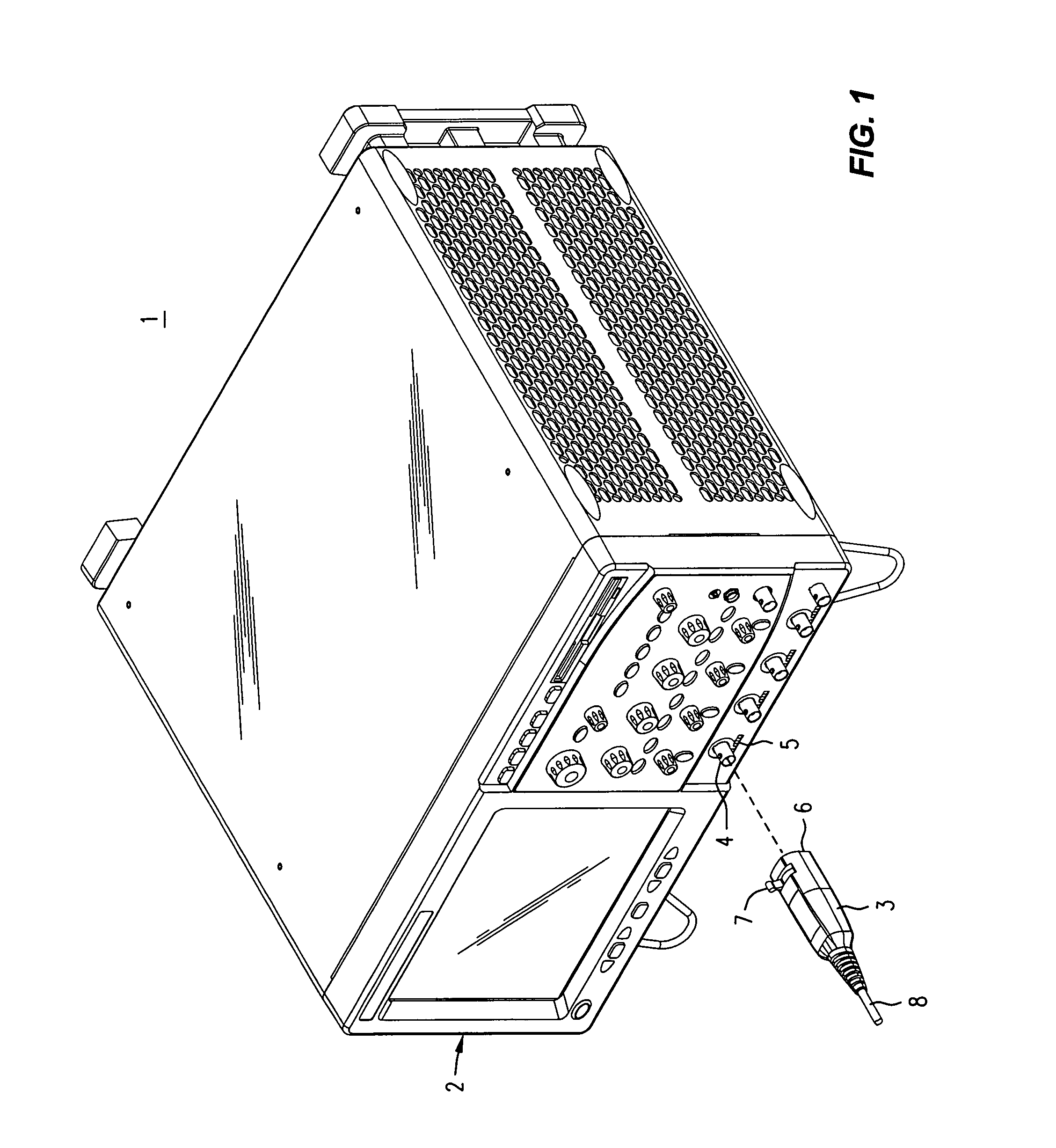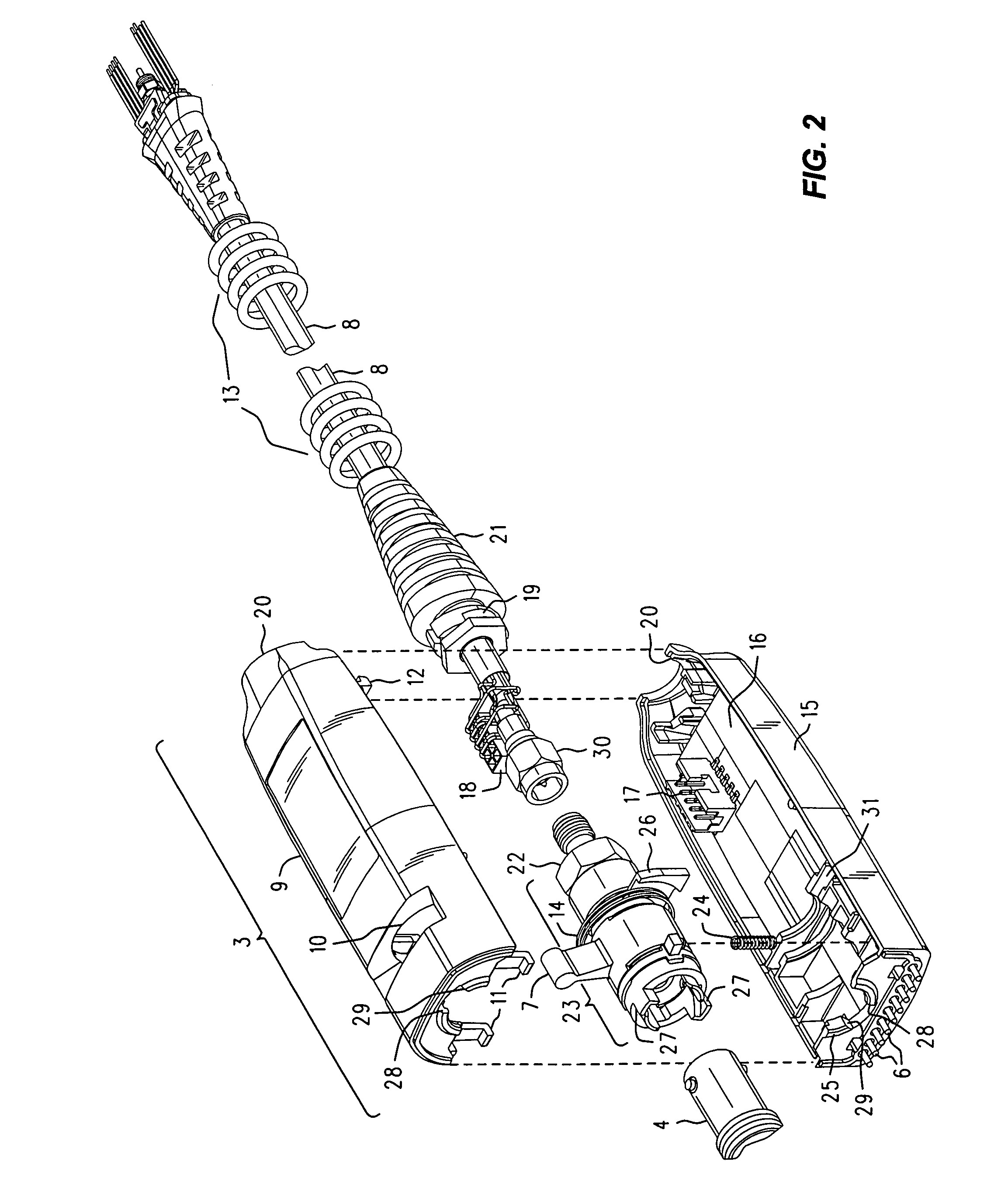Positive locking push-on precision 3.5 mm or 2.4 mm connector for an oscilloscope probe
a technology of push-on and connector, which is applied in the direction of coupling device connection, engagement/disengagement of coupling parts, instruments, etc., can solve the problems of affecting the fidelity of transmitted signals, affecting the physical size of coaxial transmission lines, and more conveniently manipulated connectors (e.g., bnc) being unsuitable for high frequency servi
- Summary
- Abstract
- Description
- Claims
- Application Information
AI Technical Summary
Benefits of technology
Problems solved by technology
Method used
Image
Examples
Embodiment Construction
[0013]Refer now to FIG. 1, wherein is shown a front perspective view 1 of an electronic instrument 2, such as a digital oscilloscope, having one or more front panel precision female 3.5 mm bayonet latch connectors 4 that receive a positive locking push-on precision male 3.5 mm bayonet latch connector assembly 3 (probe pod housing), say, in support of operation with an active probe (not shown) connected at a distal end of a cable 8. It will be appreciated that, although our explanation will proceed for the 3.5 mm connector, what is said and shown applies equally well to the case of a 2.4 mm connector.
[0014]In a manner similar to that explained in another U.S. Pat. No. (6,095,841) that is itself incorporated in the '099 Patent incorporated herein, the positive locking push-on precision male 3.5 mm bayonet latch connector probe pod housing is installed by first lining it up and then pushing it toward the 'scope. That engages the 3.5 mm bayonet latch detents, and a simple motion with th...
PUM
 Login to View More
Login to View More Abstract
Description
Claims
Application Information
 Login to View More
Login to View More - R&D
- Intellectual Property
- Life Sciences
- Materials
- Tech Scout
- Unparalleled Data Quality
- Higher Quality Content
- 60% Fewer Hallucinations
Browse by: Latest US Patents, China's latest patents, Technical Efficacy Thesaurus, Application Domain, Technology Topic, Popular Technical Reports.
© 2025 PatSnap. All rights reserved.Legal|Privacy policy|Modern Slavery Act Transparency Statement|Sitemap|About US| Contact US: help@patsnap.com



